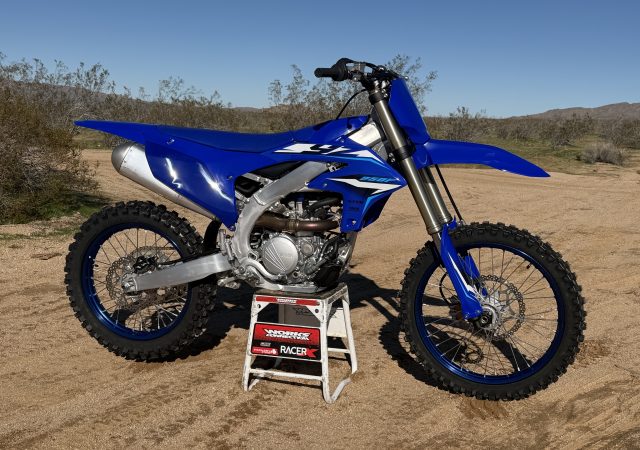
For this edition of Classic Ink, we are going to take a look back at ads for Suzuki’s 1980 motocross and off-road lineup.
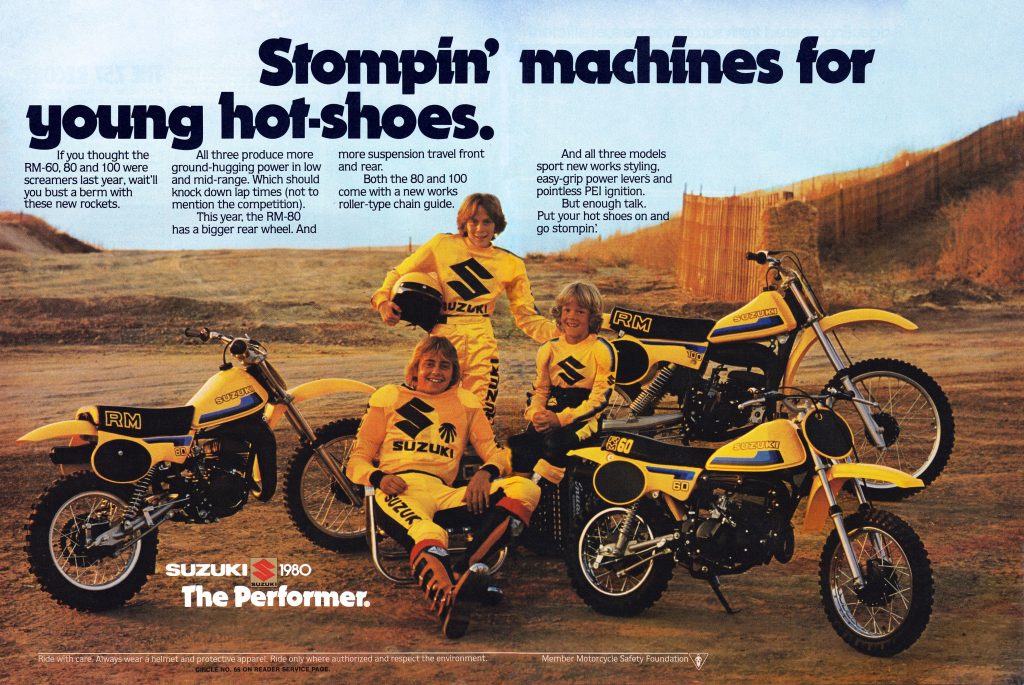 Suzuki had an extensive lineup of entry-level racers in 1980 with the RM60, RM80, and RM100. The RM80 still lives on in the form of the RM85, but the 60 and 100 have long since been committed to the annuls of motocross history. In the seventies, both Suzuki and Yamaha produced machines for the 100 class but by the early eighties, interest in the class had waned to the point that both manufacturers stopped their production.
Suzuki had an extensive lineup of entry-level racers in 1980 with the RM60, RM80, and RM100. The RM80 still lives on in the form of the RM85, but the 60 and 100 have long since been committed to the annuls of motocross history. In the seventies, both Suzuki and Yamaha produced machines for the 100 class but by the early eighties, interest in the class had waned to the point that both manufacturers stopped their production.
Today Suzuki seems to be at a crossroads in their motocross program. They no longer produce their well-regarded and deeply missed RM125 and RM250 and have failed to put much development into the remaining machines in the lineup. The RM85 is three to four times older than any of the riders currently racing them and the RM-Z250 and RM-Z450 currently occupy a niche as the “budget” Japanese four-stroke racers. The lack of common features like electric start and a glacial update schedule have left Suzuki looking like it no longer cares about the motocross market.
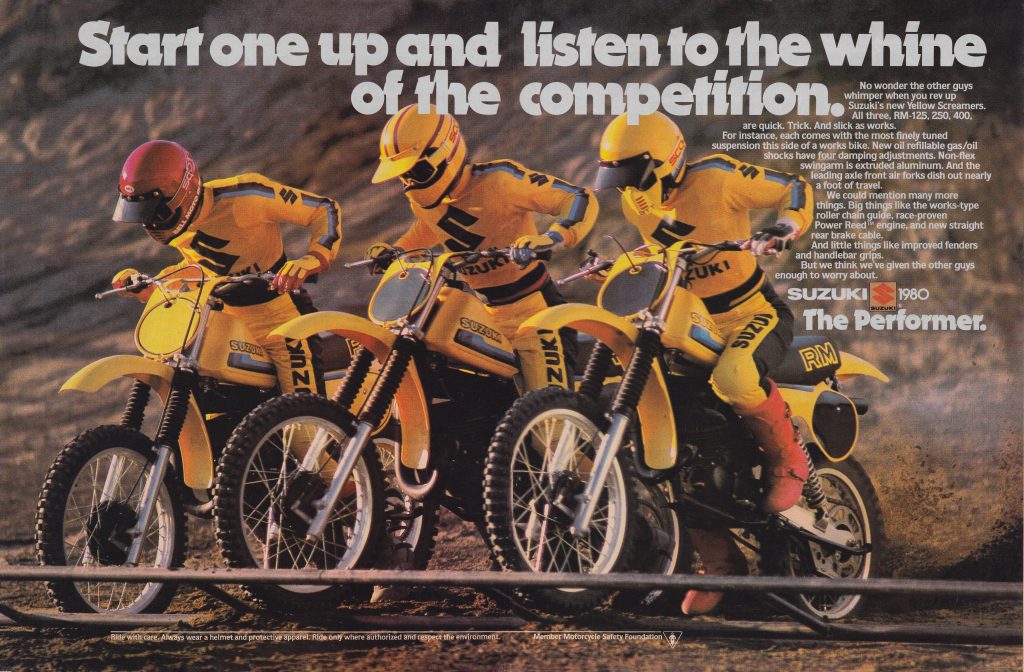 New fenders for 1980 did away with the 1979 model RM’s awkward “duck-billed” appearance. None of the full-size RMs were tops in their class in 1980 but all offered competitive performance.
New fenders for 1980 did away with the 1979 model RM’s awkward “duck-billed” appearance. None of the full-size RMs were tops in their class in 1980 but all offered competitive performance.
In 1980, however, that could not have been further from the truth. Throughout the 1970s, Suzuki was a motocross powerhouse. Riders like Roger De Coster, Joël Robert, Gerrit Wolsink, Gaston Rahier, Akira Watanabe, Harry Everts, Danny LaPorte, and Tony Distefano captured Suzuki countless titles and victories during the decade. Their works machines were rolling pieces of art, and their production bikes were some of the best available from any manufacturer.
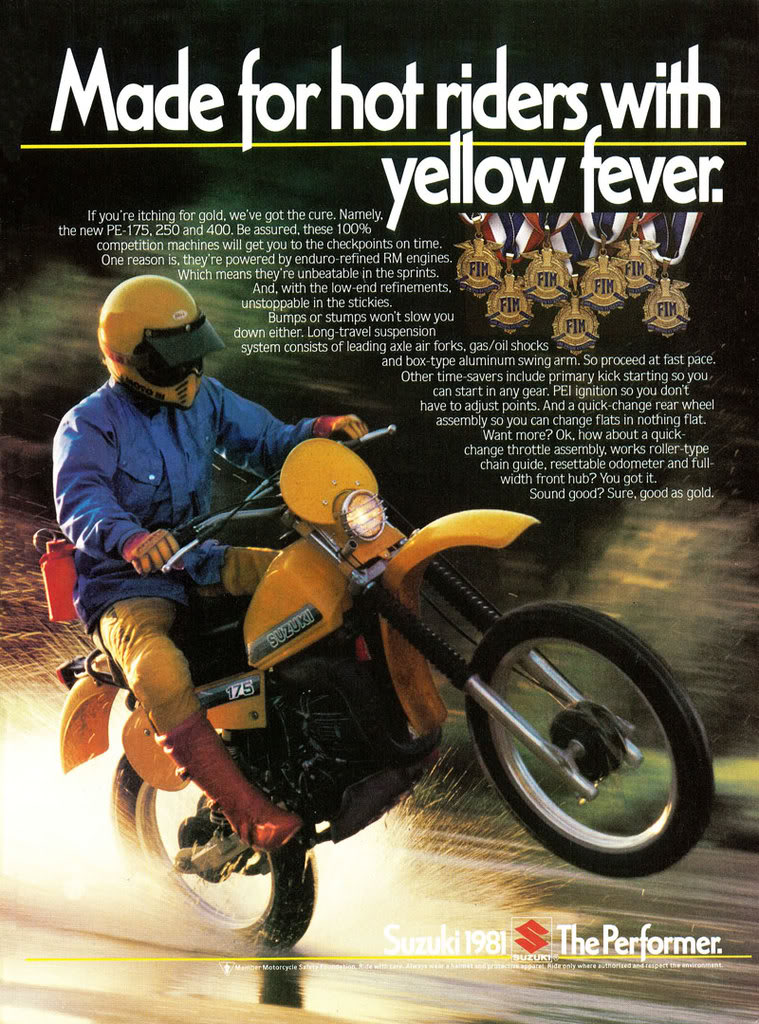 In 1980, Suzuki offered a full lineup of highly competitive Enduro machines. The PE175, PE250, and PE400 did battle with Yamaha’s ITs, Honda’s XRs, Kawasaki’s KDXs, and a bevy of competitors from Europe. By 1985, Suzuki was out of the two-stroke Enduro market having halted production on the entire PE lineup.
In 1980, Suzuki offered a full lineup of highly competitive Enduro machines. The PE175, PE250, and PE400 did battle with Yamaha’s ITs, Honda’s XRs, Kawasaki’s KDXs, and a bevy of competitors from Europe. By 1985, Suzuki was out of the two-stroke Enduro market having halted production on the entire PE lineup.
With the 1980s approaching, there were vast changes in motocross design about to take place. Rising-rate single-shock rear suspensions, liquid cooling, and disc brakes were all clearly on the horizon in 1980. Kawasaki’s Uni-Trak was already making its debut on the 1980 KXs and all the factory teams were using some variation of a single shock rear suspension on their works machines.
In many ways, the 1980 season was the end of an era for motocross. This is the last year for traditional dual shocks for Suzuki with the revolutionary Full Floater set to make its debut in 1981. In 1981, Yamaha, Honda, and Suzuki all moved to liquid cooling on their 125s with the YZs adding the sport’s first “power valve” in 1982. After the 1980 season, motocross machines became much more advanced and complex across the board. These 1980 machines are simple by comparison, with air-cooling, dual-shocks, drum brakes, and a lack of any sort of variable exhaust gizmos.
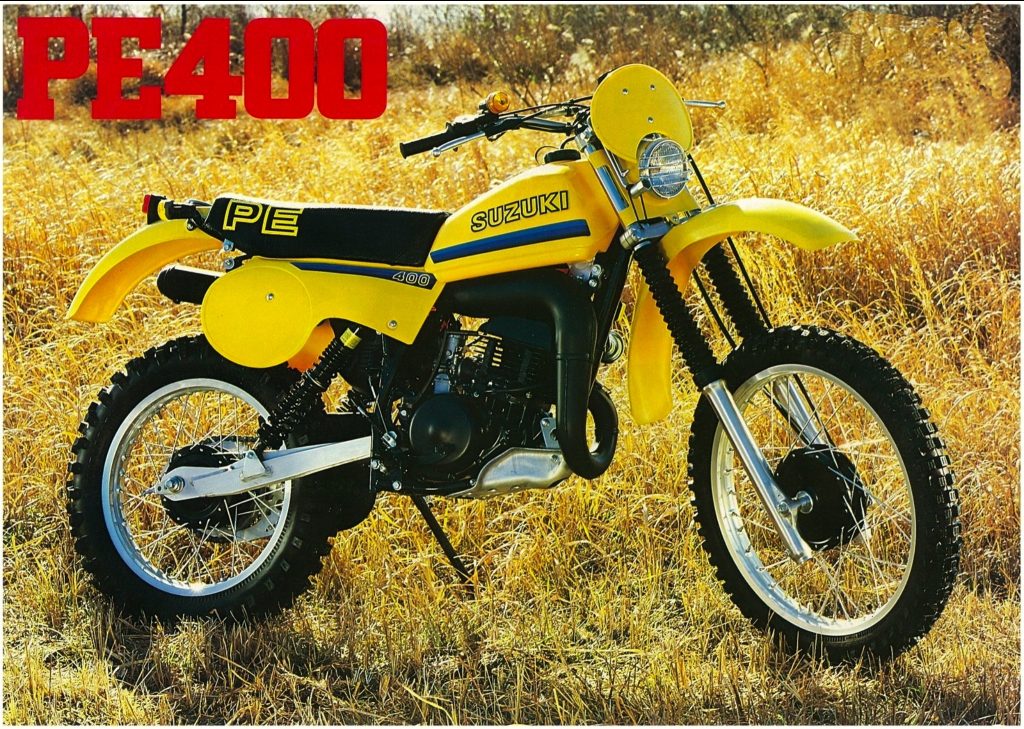 Open class Enduro machines were all the rage in 1980 with Suzuki, Kawasaki, Honda, Yamaha, KTM, Husqvarna, and Can-AM all making machines designed for hauling in the woods.
Open class Enduro machines were all the rage in 1980 with Suzuki, Kawasaki, Honda, Yamaha, KTM, Husqvarna, and Can-AM all making machines designed for hauling in the woods.
While the bikes were rudimentary by modern standards, there could be no doubt about Suzuki’s commitment to the sport in 1980. They offered a machine for every size and class from mini to Open. The RMs were not always the best bikes in every category, but they offered competitive performance and a winning reputation. Riding a Suzuki was not a guaranteed ticket to the winner’s circle in 1980 but going with “The Performer” was a solid decision if race wins were your goal.
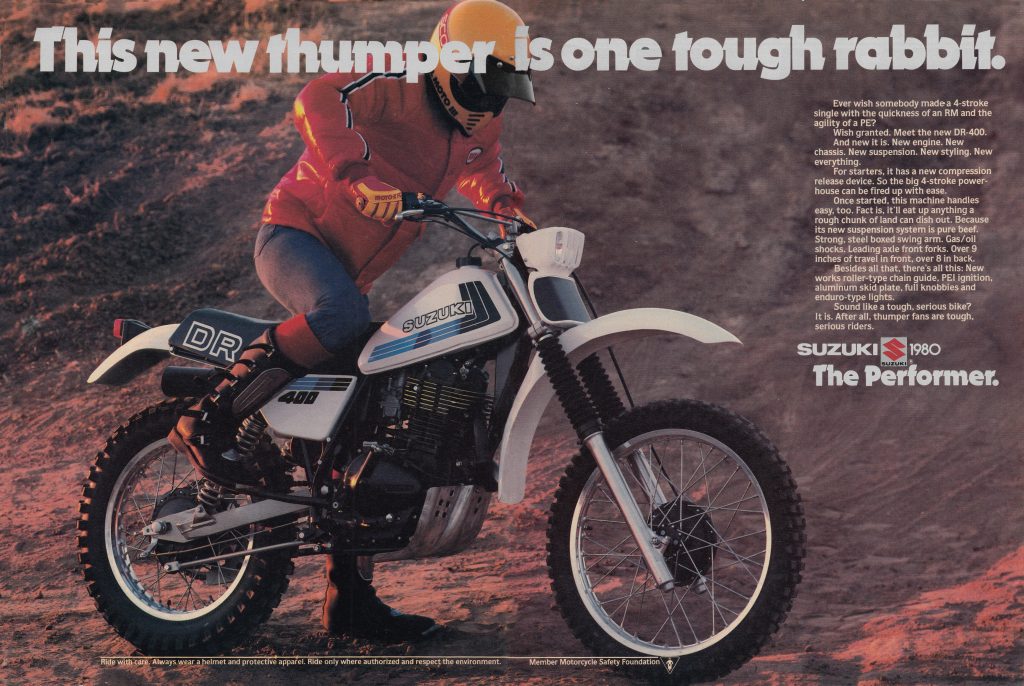 In addition to the two-stroke PEs, Suzuki offered the four-stroke DR400 in 1980 for riders who preferred thumping to mixing gas.
In addition to the two-stroke PEs, Suzuki offered the four-stroke DR400 in 1980 for riders who preferred thumping to mixing gas.
In the off-road arena, Suzuki was just as committed to the sport with a full lineup of Enduro machines set to do battle in the woods and the desert. The PE lineup offered a 175, 250, and 400 two-stroke designed to take on the ISDE. If four-strokes were your thing then the all-new DR400 was ready and set to do battle with the XR, KLX, and TT. All four offered long travel suspension, up-to-date chassis, and powerful motors. In 1980, regardless of whether you preferred busting berms or dodging trees, Suzuki had you covered.


